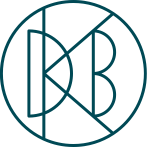Emoji productivity at Productboard
As I mentioned in my introduction to emoji productivity last week, it’s a big interest of mine—as much for what it says about founders as for what it says about technology. I wrote at the time:
Founders of emoji productivity startups believe that work can be fun. Moreover, they know that playful interfaces can help: by setting an upbeat tone, by inviting lightweight expression, and by blurring the lines between consumer and enterprise experiences.
So I was excited when Antonio, my partner at Matrix, sent me a Fast Company article by Hubert Palan, the founder & CEO of Productboard: “Why workplaces need to embrace emojis now.”
In the piece, Hubert shares a screenshot of Productboard’s team handbook. The landing page is studded with emoji, used as icons to set off each link: raised hands (🙌) for the link to All Hands, a briefcase (💼) for the WFH Handbook, a pill (💊) for Covid-19 resources.
Screenshot of the Productboard team handbook, featured in founder & CEO Hubert Palan’s Fast Company piece published January 31, 2021: “Why workplaces need to embrace emojis now.”
Hubert opens by acknowledging that emoji may not be for everyone, imagining an employee seeing Productboard’s handbook for the first time: “Have you joined a company that speaks your language or are you suddenly regretting that decision to leave your previous, decidedly non-emoji-using firm?” But he comes down firmly on the side of emoji, for a bunch of reasons:
Belonging: “Productboard is an emoji-lovers heaven and many people who work here have told me that seeing the Employee Handbook on day one confirmed that the company was a perfect fit.”
Conveying tone: “Productboard runs on Slack.…This means that most of our communication is brief and to the point. We don’t spend a lot of time finding the right words to convey the kind of context and tone you get from a face-to-face conversation. That’s what emojis are for.”
Glanceability: “For the same reason that we use icons as a visual aid on screens, signs and documents, everyone at Productboard uses emojis to help deliver complex information quickly.…[For instance, the eyes emoji (👀)] doesn’t just mean ‘look at this,’ it’s a more elaborate idea that says, ‘I’ve seen your request and will respond to it.’”
Culture: “We’ve also created emojis for each of our company values. This gives us a fun and easy way to give someone props for living up to one of them without sounding pompous while making our values more accessible and relevant to everyone.”
Permission to be playful: “And because I use emojis to express myself [as the CEO], it gives everyone else the permission they sometimes need to use them in the workplace.”
Out of all of these points, I find the final two most striking. Hubert helped me realize that emoji productivity builds culture in part by blurring irony and sincerity. In other words: emoji somehow makes it okay to be earnest. I notice this in my own communication with friends, littered with hearts and stars and other stuff that’s more Lisa Frank than serious grownup. But the same dynamic applies at work.
And as far as permission to be playful goes, I’m reminded of a piece I wrote about mentoring years ago:
In fact, all good relationships play with power dynamics. Status games are an important way of showing affection.…When we’re comfortable enough to shift between high and low at will, laughter and epiphanies erupt. Freed from the expectations of knowing everything or knowing nothing, we can get closer to the truth together.
By employing emoji liberally, Hubert has helped set a culture at Productboard that seems to value communicating clearly without taking themselves too seriously.
Thanks to Hubert Palan for sharing this glimpse into emoji productivity in practice a Productboard! And thanks to Antonio for seeing Hubert’s Fast Company piece and sharing it with me.


